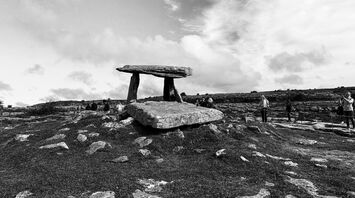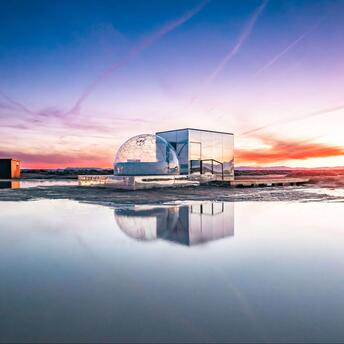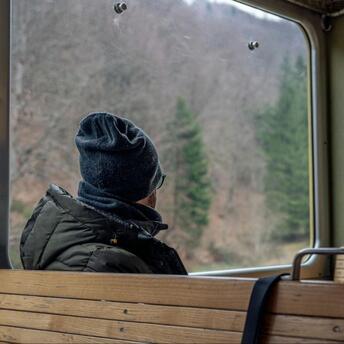The Burren: Ireland’s Otherworldly Landscape of Stone and Silence

In the western reaches of County Clare, Ireland, lies a landscape so stark and surreal that it feels as though it belongs to another planet. The Burren, with its vast expanses of exposed limestone, jagged rock formations, and hidden flora, captivates visitors with its alien beauty and ancient history. This unique region, stretching across 250 square kilometers, is a living testament to the power of geological processes, human history, and the resilience of life in one of Europe’s most striking environments.
A Geological Wonder Carved by Time
The Burren’s name comes from the Irish word Boireann, meaning "rocky place," which perfectly encapsulates the area’s defining characteristic. Formed over 300 million years ago, the Burren’s limestone landscape is the result of ancient seabeds that have been shaped by millennia of natural forces. The land, once submerged under warm, tropical waters, accumulated layer upon layer of sediment that, over time, compressed into limestone. As tectonic activity reshaped the earth, these ancient seabeds were uplifted, creating the jagged terrain we see today.
Over the last several thousand years, the region’s harsh weather, combined with the dissolution of limestone by slightly acidic rainwater, has carved the Burren into its current form. The result is an expanse of pavement-like limestone slabs known as clints, crisscrossed by deep cracks, or grikes, that give the area its characteristic patchwork appearance. This rocky terrain, with its crevices and boulders, feels both barren and strangely alive, offering a unique landscape that draws geologists, hikers, and nature enthusiasts alike.
Life Finds a Way: The Flora of the Burren
Despite its seemingly inhospitable appearance, the Burren is home to a surprising array of plant life. The region’s distinctive limestone pavements provide a variety of microclimates, allowing for the coexistence of plants typically found in different environments. Alpine, Mediterranean, and Arctic species thrive here side by side, creating a botanical tapestry that is as remarkable as it is unexpected.
In the spring and early summer, the Burren bursts into bloom, with colorful flowers emerging from the rocky crevices. Visitors can spot rare species such as the blue gentian, the mountain avens, and the Irish orchid, each clinging tenaciously to life in the shallow soil that accumulates between the limestone slabs. This unique botanical diversity makes the Burren a paradise for botanists and nature lovers, who come to witness the resilience of life in this seemingly barren environment.
A Landscape Shaped by Human Hands
While the Burren’s geological origins are ancient, the hand of humanity has also left a significant mark on this region. Evidence of human habitation in the Burren dates back thousands of years, with numerous archaeological sites scattered across the landscape. Dolmens, stone circles, and ancient burial cairns bear witness to the people who lived and thrived here long before modern times.
One of the most famous archaeological landmarks in the Burren is the Poulnabrone Dolmen, a megalithic portal tomb that dates back over 5,000 years. Its massive capstone, balanced atop vertical stone slabs, stands as a haunting reminder of the region’s deep connection to its past. The Burren’s numerous ancient structures tell the story of communities that found ways to adapt and survive in a challenging landscape, using the natural resources around them to create homes, burial sites, and places of worship.
Exploring the Burren: A Hiker’s Dream
For those seeking adventure and solitude, the Burren offers a wealth of hiking opportunities that allow visitors to explore its otherworldly terrain up close. The Burren National Park, established to protect the unique environment, features a network of walking trails that guide hikers through the limestone pavements, rolling hills, and hidden valleys.

One of the most popular routes is the Mullaghmore Loop, which takes hikers to the top of Mullaghmore Mountain, offering sweeping views of the surrounding Burren landscape and the distant Atlantic Ocean. The path winds through rugged rock formations and quiet glades, giving travelers a chance to experience the Burren’s vast beauty and sense of isolation. The silence here is profound, interrupted only by the occasional sound of wind or the call of a bird, providing a rare opportunity for reflection and connection with nature.
The Burren and Cliffs of Moher UNESCO Global Geopark
In recognition of the Burren’s global significance, the region has been designated as part of the Burren and Cliffs of Moher UNESCO Global Geopark. This designation highlights the Burren’s importance not only as a natural wonder but also as a place of cultural heritage and environmental conservation. The Geopark works to protect the delicate ecosystems of the Burren while promoting sustainable tourism practices that allow visitors to experience the area responsibly.
The nearby Cliffs of Moher, with their dramatic sea views and towering heights, are another key attraction within the Geopark, but the Burren itself offers a quieter, more introspective experience. Together, these two landscapes showcase the incredible diversity of Ireland’s west coast, from the sheer cliffs plunging into the Atlantic to the ancient stone fields stretching inland.
A Journey Through Time and Space
Visiting the Burren is an experience unlike any other in Ireland. Its stark beauty, shaped by millions of years of geological forces, invites travelers to slow down and immerse themselves in a world that feels both ancient and timeless. The interplay between rock and life, between past and present, creates a sense of continuity that leaves a lasting impression on those who take the time to explore its many facets.
For travelers seeking an escape from the familiar and a deeper connection to Ireland’s natural and cultural heritage, the Burren offers a journey through time and space, where the silence of the stones speaks louder than words, and the resilience of life is on full display in every crack and crevice.



















